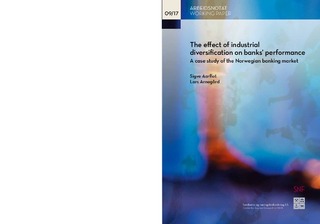| dc.description.abstract | By attracting deposits from savers and offering financing to borrowers, banks play an important role in the economy. Which strategic approach banks ought to pursue for optimizing performance and hence contribute to financial stability is a fundamental question in this context. In this report, we attempt to answer one aspect of this question by estimating the effect of industrial diversification on bank performance using annual data from 112 banks in Norway over the period 2004-2013. Employing several measures of portfolio diversification, we first estimate the average effect of diversification on bank performance. Then, we investigate whether the effect of diversification on performance is dependent on the underlying bank risk. Our findings suggest that increased diversification improves performance for banks in Norway. Moreover, we find that the effect of diversification is in fact dependent on bank risk. Increased diversification seems to be the superior strategy in low- and high risk scenarios, while a more concentrated portfolio should be preferred at moderate risk levels. However, similar studies done in other developed countries find evidence that differs from our results. We address these contrasting results by arguing that differences in country-specific factors such as market structure and risk should be considered in order to make meaningful comparisons. | nb_NO |
